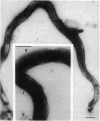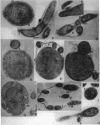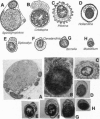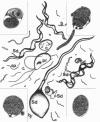Abstract
Phenomena previously unknown in free-living spirochetes are reported: large-sized cells with variable diameter (length to 100 microns, width between 0.4 and 3.0 microns), composite structure (smaller spirochetes inside larger ones), and positive phototropic behavior. These bacteria, Spirosymplokos, are compared with all other spirochete genera. The large spirochete, grown in mixed culture, was studied live and by transmission EM. The protoplasmic cylinder was replete with spherical granules 20-32 nm in diameter, and three to six periplasmic 26-nm flagella were inserted subterminally. Comparably granulated and flagellated small spirochetes were located inside the protoplasmic cylinder and in the periplasm of the large ones. When exposed to air, movement became erratic, protoplasmic cylinders retracted to lie folded inside the outer membrane, and refractile membranous structures formed. From one to four structures per still-moving spirochete were seen. Spirosymplokos was enriched from laboratory samples exposed to oxygen-rich and desiccating, but not dry, conditions for at least 4 mo after removal of microbial mat from the field.
Full text
PDF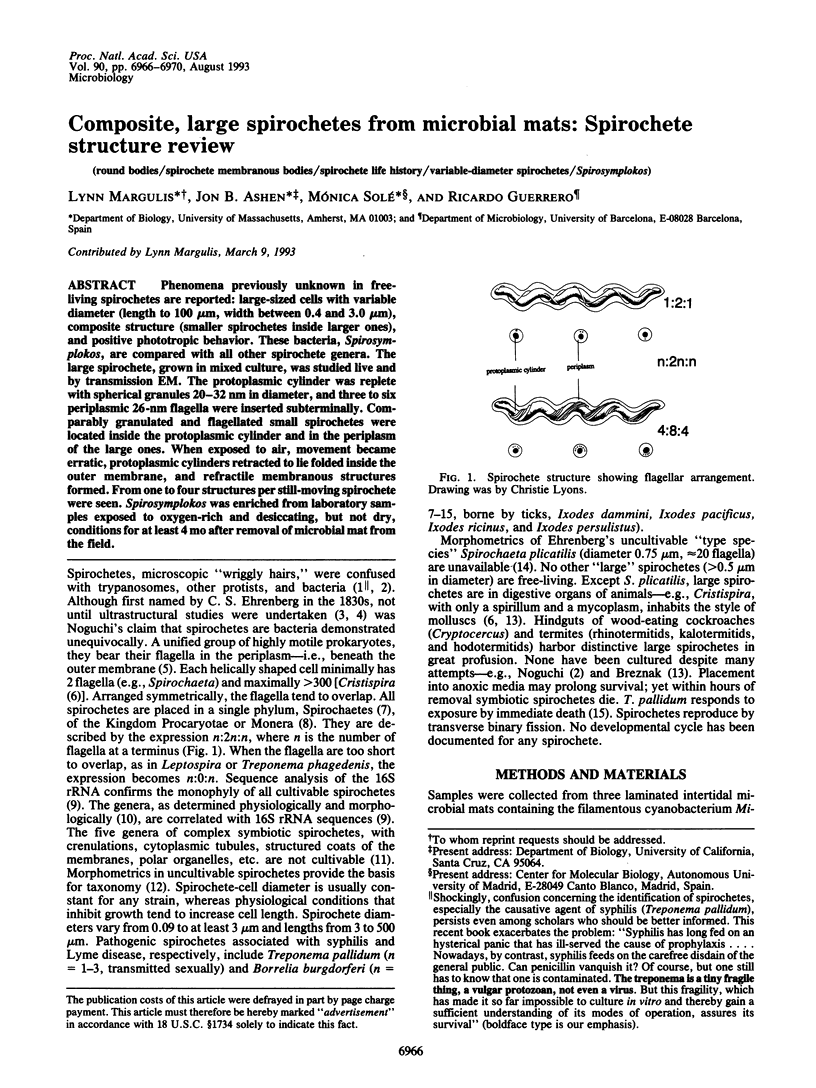
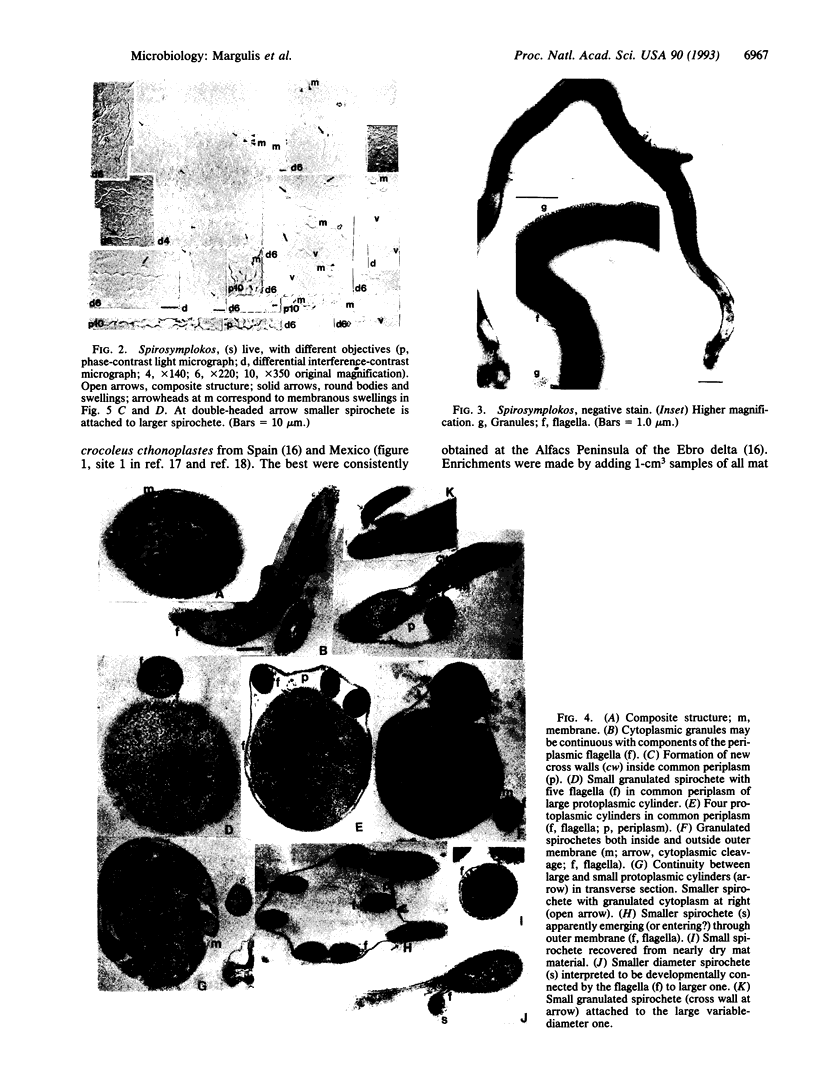
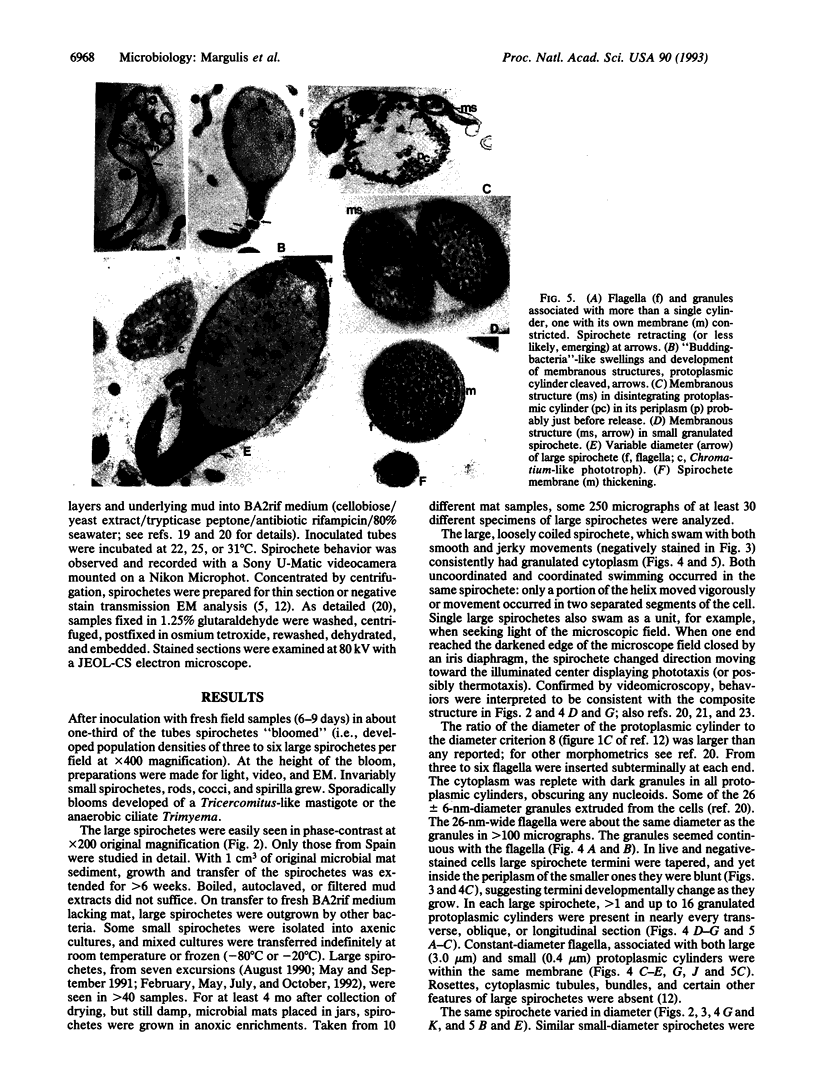
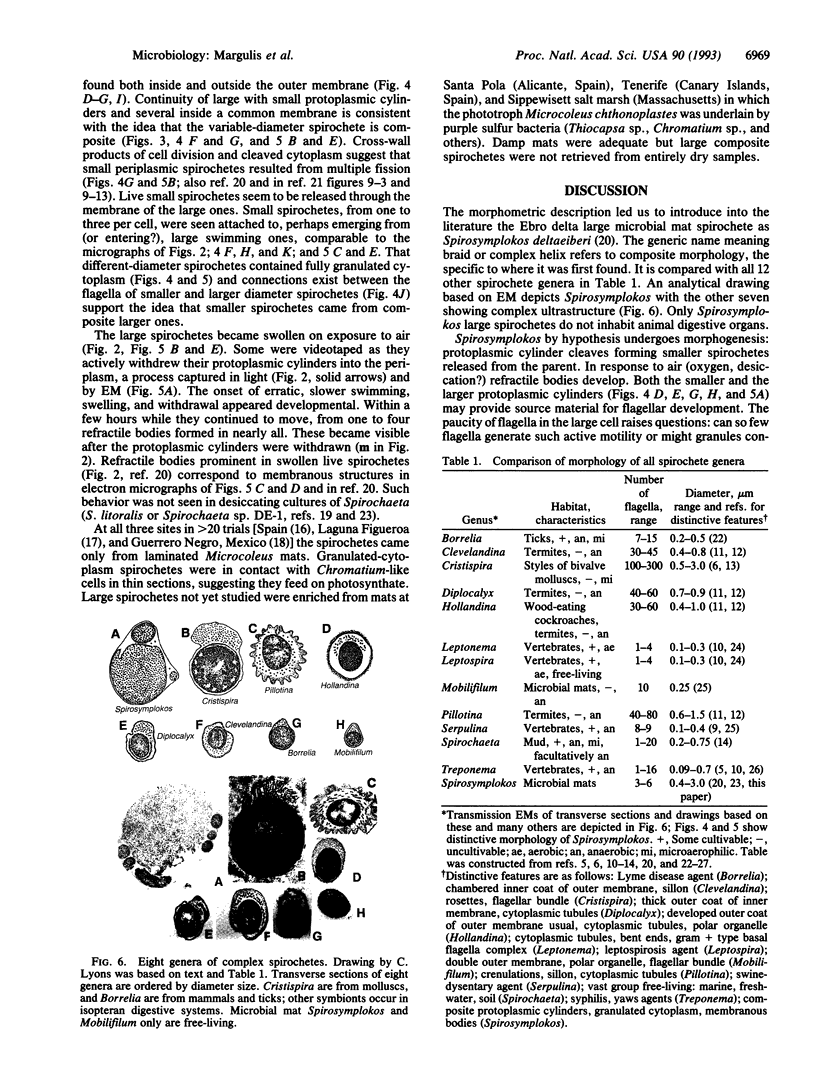
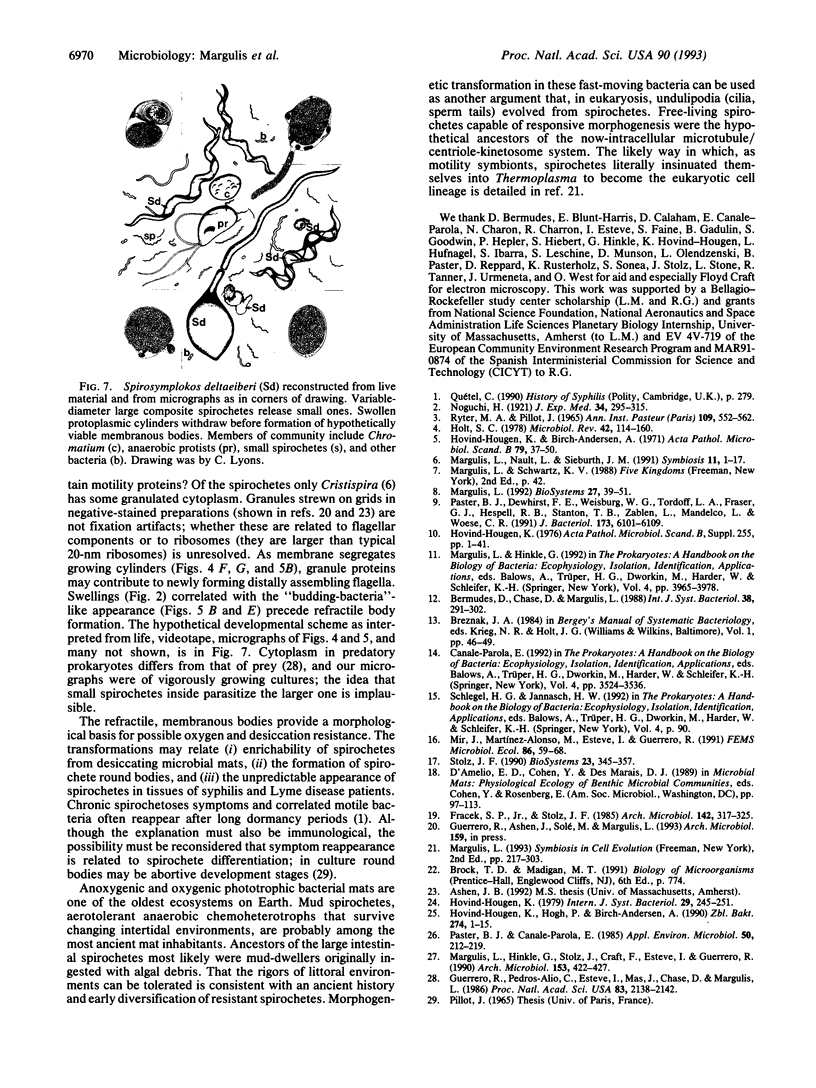
Images in this article
Selected References
These references are in PubMed. This may not be the complete list of references from this article.
- Bermudes D., Chase D., Margulis L. Morphology as a basis for taxonomy of large spirochetes symbiotic in wood-eating cockroaches and termites: Pillotina gen. nov., nom. rev.; Pillotina calotermitidis sp. nov., nom. rev.; Diplocalyx gen. nov., nom. rev.; Diplocalyx calotermitidis sp. nov., nom. rev.; Hollandina gen. nov., nom.[TRUNCATED]. Int J Syst Bacteriol. 1988 Jul;38(3):291–302. doi: 10.1099/00207713-38-3-291. [DOI] [PubMed] [Google Scholar]
- Fracek S. P., Jr, Stolz J. F. Spirochaeta bajacaliforniensis sp. n. from a microbial mat community at Laguna Figueroa, Baja California Norte, Mexico. Arch Microbiol. 1985;142:317–325. doi: 10.1007/BF00491897. [DOI] [PubMed] [Google Scholar]
- Guerrero R., Pedros-Alio C., Esteve I., Mas J., Chase D., Margulis L. Predatory prokaryotes: predation and primary consumption evolved in bacteria. Proc Natl Acad Sci U S A. 1986 Apr;83(7):2138–2142. doi: 10.1073/pnas.83.7.2138. [DOI] [PMC free article] [PubMed] [Google Scholar]
- Holt S. C. Anatomy and chemistry of spirochetes. Microbiol Rev. 1978 Mar;42(1):114–160. doi: 10.1128/mr.42.1.114-160.1978. [DOI] [PMC free article] [PubMed] [Google Scholar]
- Hovind-Hougen K. Determination by means of electron microscopy of morphological criteria of value for classification of some spirochetes, in particular treponemes. Acta Pathol Microbiol Scand Suppl. 1976;(255):1–41. [PubMed] [Google Scholar]
- Hovind-Hougen K., Høgh P., Birch-Andersen A. Morphological heterogeneity among spirochetes isolated from cases of swine dysentery. Zentralbl Bakteriol. 1990 Oct;274(1):1–15. doi: 10.1016/s0934-8840(11)80970-9. [DOI] [PubMed] [Google Scholar]
- Margulis L. Biodiversity: molecular biological domains, symbiosis and kingdom origins. Biosystems. 1992;27(1):39–51. doi: 10.1016/0303-2647(92)90045-z. [DOI] [PubMed] [Google Scholar]
- Margulis L., Hinkle G., Stolz J., Craft F., Esteve I., Guerrero R. Mobilifilum chasei: morphology and ecology of a spirochete from an intertidal stratified microbial mat community. Arch Microbiol. 1990;153:422–427. doi: 10.1007/BF00248421. [DOI] [PubMed] [Google Scholar]
- Margulis L., Nault L., Sieburth J. M. Cristispira from oyster styles: complex morphology of large symbiotic spirochetes. Symbiosis. 1991;11:1–17. [PubMed] [Google Scholar]
- Paster B. J., Canale-Parola E. Treponema saccharophilum sp. nov., a large pectinolytic spirochete from the bovine rumen. Appl Environ Microbiol. 1985 Aug;50(2):212–219. doi: 10.1128/aem.50.2.212-219.1985. [DOI] [PMC free article] [PubMed] [Google Scholar]
- Paster B. J., Dewhirst F. E., Weisburg W. G., Tordoff L. A., Fraser G. J., Hespell R. B., Stanton T. B., Zablen L., Mandelco L., Woese C. R. Phylogenetic analysis of the spirochetes. J Bacteriol. 1991 Oct;173(19):6101–6109. doi: 10.1128/jb.173.19.6101-6109.1991. [DOI] [PMC free article] [PubMed] [Google Scholar]
- Ryter A., Pillot J. Structure des spirochètes. II. Etude du genre Cristispira au microscope optique et au microscope électronique. Ann Inst Pasteur (Paris) 1965 Oct;109(4):552–562. [PubMed] [Google Scholar]
- Stolz J. F. Distribution of phototrophic microbes in the flat laminated microbial mat at Laguna Figueroa, Baja California, Mexico. Biosystems. 1990;23(4):345–357. doi: 10.1016/0303-2647(90)90016-t. [DOI] [PubMed] [Google Scholar]




